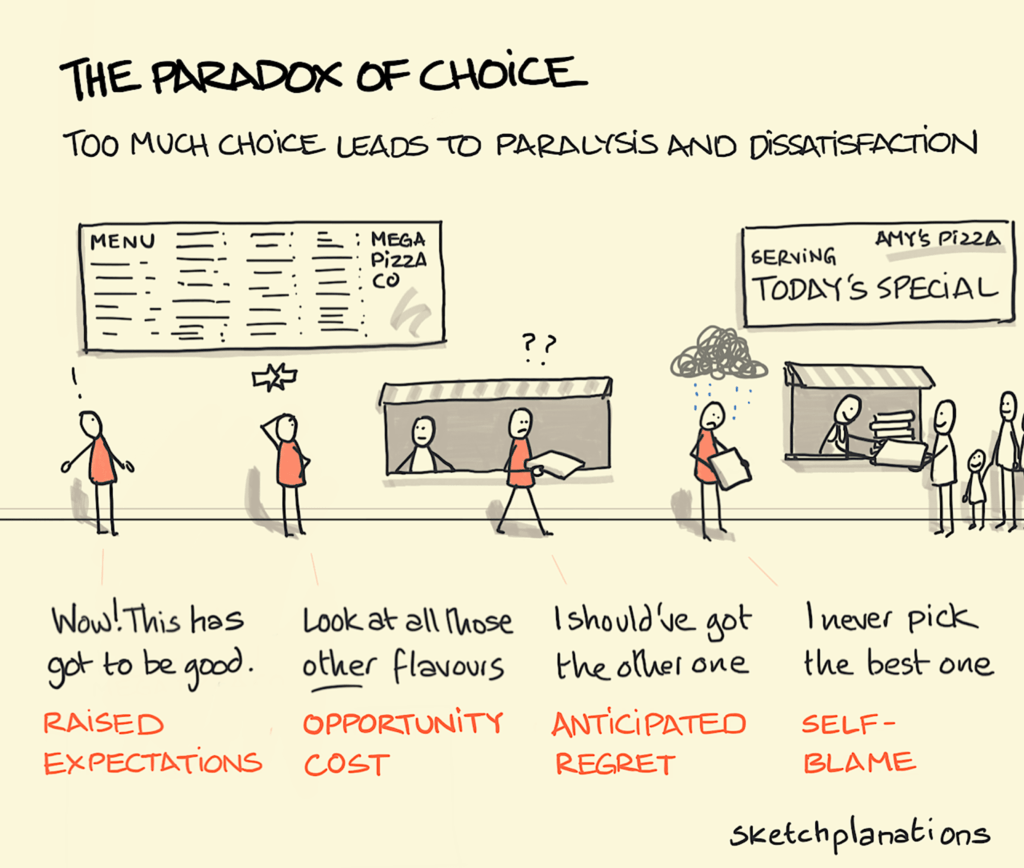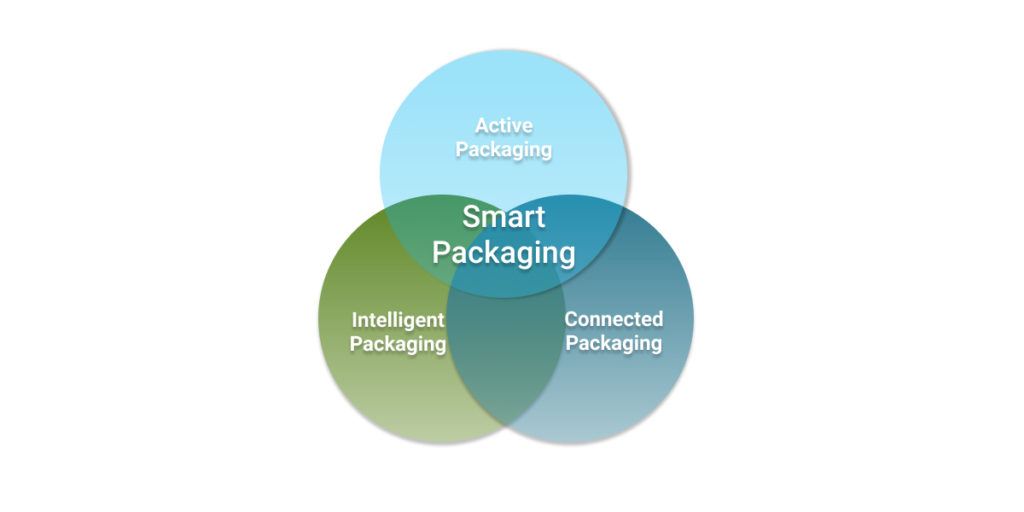There’s a lot of talk about smart packaging, connected packaging, intelligent packaging and more. It can get a little confusing. In this guide we tackle the differences, and explain the benefits of each.
The Paradox of Choice
Consumers today suffer more and more from analysis paralysis. Or as psychologists refer to it: the paradox of choice.
In a recent Ted Talk, psychologist Barry Schwartz lays bare the myth that freedom of choice helps us make better decisions. Schwartz says that choices can actually cause “paralysis, rather than liberation.”

Supermarket shelves are an obvious case-in-point: search for ‘chips’ on the website of Central Texas’ most popular retailer, HEB, and you get 477 results across 8 pages. Is it any wonder consumers sometimes find themselves frozen in a state of indecision?
However, CPG companies have a shortcut at their disposal to help consumers make a buying decision. That shortcut is your product’s packaging. As Inc. said in an article on product packaging: “…[t]hink of Tiffany & Co. For most people, the iconic robin’s-egg blue box is more recognizable than the jewelry itself.”
But despite the creativity many brands are infusing into their packaging, with artful designs and clever copy, even that is not enough.
Enter the next generation: smart packaging and connected packaging.
Despite today’s information overload, which leads to analysis paralysis, connected and smart packaging can deliver even more information to consumers, but in a distinct way. And this distinction can help consumer brands make themselves stand out on grocery store (or virtual) shelves.
Smart packaging vs connecting packaging: what are the differences?
But the purpose of this article is to help you understand the difference between smart packaging and connected packaging, as there appears to be some confusion.

What is smart packaging?
Smart packaging is an umbrella term that covers several technology innovations that make a package smart.
Smart packaging, in a nutshell, provides some sort of real-time information or action, depending on the circumstances. For example, it might contain a chemical that can make the package cold if exposed to a hot environment. Or it could leverage a small digital display to communicate a pending expiration date.
Smart packaging can be divided into three categories:
- Connected packaging: (see explanation below).
- Active packaging: Active packaging is packaging that interacts with the product to improve shelf life and maintain quality during storage. For example it can use moisture-regulating or light filtering materials.
- Intelligent packaging: Intelligent packaging uses embedded sensors in the packaging to monitor product temperature or humidity levels.
What is connected packaging?
Connected packaging, on the other hand, is packaging that has become an internet-connected device. Through serialized QR codes, RFID chips or other mechanisms, the package provides information directly from the cloud, with real-time content such as:
- Product origins, batch information, distance traveled
- Authentication data
- Geo-located marketing and engagement information
- Recall updates
How can connected packaging help you stand out on the shelf?
There are at least five ways connected packaging can help you stand out on the supermarket shelf or on ecommerce sites:
1. Personalized engagement with consumers
By getting consumers to scan the serialized QR codes on a connected package you can send them to your website to offer additional information. From your site you can share recipes, videos, promotions, or coupons. You can even share product details like instructions, sourcing, and allergen information, or get them to sign up for your newsletter.
2. Full product transparency
Deliver ingredient information, including allergy details, as well as anything consumers might want to know about the brand, such as sustainability goals, sourcing information, philanthropic efforts, and company beliefs. You can also provide track and trace capabilities so consumers can learn about the product’s journey from farm, or plant, to store.
3. Product authentication
With product counterfeiting becoming a growing problem, connected packaging can validate for your consumers that the product they’re buying is the real thing. Because each serialized QR code is completely unique for each package, you can communicate which batch, plant, and even which plant worker created a particular product.
4. Collect data
With connected packaging you can collect detailed demographic data about your consumers, such as age, gender, geographic concentration and product preferences.
5. Deliver real time information
If for some reason you need to implement a product recall, with serialized QR codes you can identify specifically which product batch was affected, isolate the recall information to the individualized QR codes corresponding to that batch, and communicate directly to consumers that their particular package might be compromised.
The Bottom Line
We are living in very interesting times. Technology is transforming our lives, through our mobile devices, VR glasses, and even through our packaging.
But lest you get distracted by shiny object syndrome, as CPG providers you need to focus on the task at hand: standing out in the midst of the overwhelming flow of choices that keep consumers from making purchase decisions.
Packaging can do a great job helping consumers make decisions. By appealing to their emotions with beautiful designs, clever copy and sincere mission statements, you are making the right moves. But a growing number of CPG companies today are starting to catch on, and the playing field is beginning to level out, again.
The next frontier is smart packaging and connected packaging. We recommend you get smart (pun intended), educate yourself on the terms, and decide how you’re going to leverage these trends to help you stand out from the crowd!

